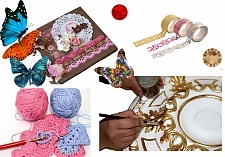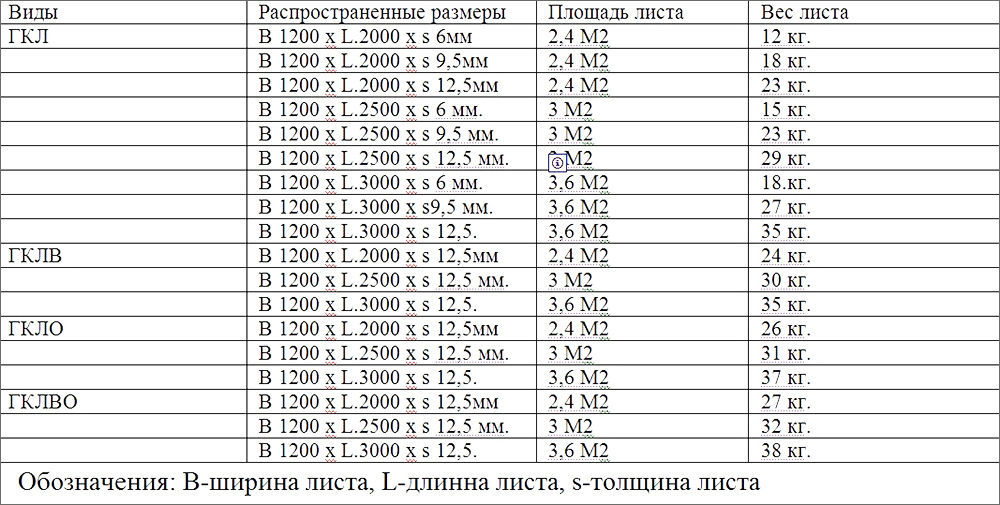One of the most beautiful plants in indoor floriculture is the unfolded dracaena. Despite the difficulties in care, this decorative culture has more and more fans every year. It is valued for its elegant leaves that have an original arched shape.
Beautiful decorative culture.
Content
- 1 Description and popular varieties
- 2 Caring for dracaena bent at home
- 2.1 Location and lighting
- 2.2 Temperature
- 2.3 Air humidity
- 2.4 Watering
- 2.5 The soil
- 2.6 Top dressing and fertilizers
- 2.7 Pruning and shaping the crown
- 2.8 Transfer
- 3 Reproduction of a bent dracaena
- 3.1 Tops
- 3.2 Air layering
- 3.3 Stem cuttings
- 4 Diseases and pests
Description and popular varieties
The evergreen plant belongs to the genus Dracaena of the asparagus family. Its other name is dracaena reflex. Wild specimens of this species are found in the tropics and reach five meters in height. An elegant indoor tree does not exceed 2 m.
In appearance, it resembles a small palm tree: there is a bare trunk and shoots with leaves, which are located in a bunch at the ends. The stem is weak, the branches extend practically from the root. This gives the dracaena a similarity to a shrub and allows you to call it a false palm.
Leathery green leaves with a light border and thin veins are curved downward. They adhere closely to the stem with a wide base. The length of the leaf blades is up to 16 cm, the width is up to 3 cm. Fragrant small flowers are white or greenish-yellow and are gathered in panicle-like inflorescences. Indoor culture rarely blooms.
There are several varieties of this unusual house palm.
The most popular are:
- dracaena Anita - characterized by linear-shaped leaf blades of a monochromatic green color;
- song of India - attracts attention with wide dark green leaves with a yellow border and a longitudinal light stripe;
- song of Jamaica - characterized by compact shiny foliage of dark green color with contrasting veins.
Dracaena Anita has a green color and linear plates.
Caring for dracaena bent at home
In its original homeland - the islands of Madagascar and Mauritius - the reflex dracaena lives in tropical conditions. For an exotic culture to feel at home, it needs an appropriate microclimate.
Location and lighting
A visitor from the tropics needs bright, diffused light for at least 12 hours a day. The best place to keep it in the house is windows facing south-west or southeast. Excess lighting, like its lack, negatively affects the decorative effect of the leaves. Direct sunlight is especially dangerous and can cause burns. In late autumn and winter, additional lighting should be organized using fluorescent lamps or special phytolamps.
Temperature
The temperature regime of growing is no less important. During the period of active growth and development (from March to September), the required temperature is + 20... + 25 ° С, during the rest period (from October to February), the indicators are slightly lower: + 17... + 20 ° С. At lower temperatures, the leaf blades become soft and curl. In extreme heat, it is better to keep the culture in a cool place with an influx of fresh air - on the veranda, balcony, loggia. Or take it out into the street, while protecting it from hypothermia, sudden temperature changes, and drafts.
Air humidity
The plant does not like dry air. As a result of low humidity, the tips of the leaf blades dry up and curl. Therefore, during the heating season, the dracaena is placed away from the batteries. A humid microclimate can be created using simple procedures: wipe the leaves on both sides with a damp with a sponge, wash the flower twice a week under a warm shower, spray around it every morning and evening air. A good effect is obtained by using an electric humidifier. It is desirable to maintain the humidity at 70-75%.
Watering
As for watering, in summer it should be abundant (2 times a week), in winter - moderate (as the top layer of the earth dries up). Dracaena should be watered with settled soft water at room temperature. When using hard water, dark spots form on the leaves. The soil should not be allowed to dry out, it should always remain slightly damp. Lack of moisture leads to foliage falling off, excess - to rotting of the roots and yellowing of the leaves.
The soil
The representative of the tropical flora is not very demanding on the composition of the soil. The main thing is that the soil is slightly acidic (pH not more than 6), air and moisture permeable. It is better to purchase a ready-made soil mixture for decorative deciduous crops, dracaena or palm trees.
Or cook it yourself:
- for an adult plant - mix 1 part of sand and peat, add 3 parts of turf and leafy earth;
- for the young - combine the indicated components in equal proportions.
It is recommended to put a baking powder (perlite, vermiculite) into the homemade mixture. To destroy possible pests, all components must be pre-calcined in the oven.
Dracaena is not demanding on the composition of the soil.
Top dressing and fertilizers
Dracaena reflex responds well to feeding. They are especially needed at the time of active growth, which occurs at the end of March - beginning of September. At this time, the plant is fed every 2 weeks. In winter, a dormant period sets in, and feeding is carried out once a month. It is advisable to use special complex liquid fertilizers (Ideal, Rainbow and others), which are used according to the instructions.
Pruning and shaping the crown
To make the house palm always look attractive, you need to prune it in a timely manner and correctly. This will allow you to get a compact tree with a beautiful lush crown. Only healthy specimens are suitable for pruning, the height of which is at least 30 cm from the ground to the level of attachment of the upper leaves. It is necessary to cut off the upper part of the shoots, located above the visible buds.
The procedure is performed in April or May according to the following algorithm:
- Outline the height to be cut.
- An even cut is quickly made with a pruner or a sharp knife. You cannot break off the top.
- Remove the released juice with a piece of cotton wool.
- The cut is treated with a heated garden pitch.
- Remove all leaves 15 cm below the cut.
- Spray the stem of the plant with water to reduce moisture loss.
- Sphagnum moss is wound on the trunk below the cut and fixed with threads.
- Put a transparent plastic bag on top of the plant to create favorable greenhouse conditions. It is recommended to remove it every 5-7 days and ventilate the culture.
- Transfer the flower pot to a warm, dark place.
- Water regularly through the pallet.
- After the appearance of young side shoots, the package is removed and the dracaena is moved to the light.
Transfer
An important point in home growing is transplanting. It is recommended to perform this procedure in early spring, then the plant will tolerate it more easily. Young specimens are transplanted annually, adults - once every 2-3 years.
A flower pot is chosen high and not wide. Drainage is laid out on the bottom in a thick layer. Watering is stopped 2 days before the transplant. The flower is removed carefully together with an earthen lump so as not to damage the root system. They move the dracaena into a pot, sprinkle it with soil mixture, tamp the earth around the stem, then water it. If the tree is too large and cannot be transplanted, it is recommended to replace 10-15 cm of the top soil layer.
It is necessary to replant the plant in early spring.
Reproduction of a bent dracaena
Vegetative propagation is best done in the spring. You can get a new indoor tree by grafting with the tops and parts of the stem or using air layers.
Tops
Many amateur flower growers prefer to propagate dracaena in this way.
The procedure is simple:
- At an angle of 90 °, carefully cut off the top with leaves and a stem 10-20 cm long.
- The future seedling is dried in a room for about 2 hours, after which it is placed in water.
- The cutting is placed in a warm place for several weeks (away from sunlight).
- The water is changed every 3 days. It is advisable to add a root formation stimulator - heteroauxin to it.
- When the cutting has roots, it is planted in a pot.
Air layering
This breeding method is more complicated and time consuming. It is recommended to be used only by experienced florists.
The process is as follows:
- Under the leaf node, the zone of formation of future roots is determined.
- An incision is made on the stem up to 0.5 cm deep, about 4 cm long.
- A match or a toothpick is inserted vertically into the incised place so that it does not overgrow.
- The stem is covered around the incision with sphagnum moss and wrapped in a transparent film.
- From time to time, sphagnum is sprayed with a spray bottle under the film to keep it moist.
- When roots grow through the moss, the film is removed.
- The resulting seedling is cut from an adult specimen and placed in a permanent pot.
- The incision in the maternal culture is covered with wax.
Stem cuttings
This method is similar to grafting with tops. It is suitable for both experienced and novice flower growers. Reproduction material is 15 cm long stem parts. Such cuttings can be obtained after pruning the dracaena or removing the tops.
The stems are divided into segments, which are treated with heteroauxin from below, and wax from above.
The prepared cuttings are planted in moist soil to form roots. A transparent bag is used to create greenhouse conditions. Young seedlings take root within 2 months. They can then be transplanted into separate pots.
reproduction of dracaena
Diseases and pests
If you properly care for dracaena, it rarely gets sick.
If the content rules are not followed, negative consequences are possible:
- late blight;
- bacterial leaf spot;
- root rot;
- powdery mildew;
- anthracnose.
The causative agents of these diseases - phytopathogenic bacteria and fungi - are transferred through unsterilized soil, reused pots, equipment, and spread through the air. Favorable factors for their reproduction are insufficient ventilation of the room, stagnation of moisture in the ground, high temperature (+ 25... + 30 ° С) and air humidity, the acidity of the soil mixture is higher than 6, lack of mineral fertilizers. Treatment consists in treating the affected culture with special drugs.
Among the pests that infect the dracaena retracted, the following are more common:
- spider mite;
- aphid;
- shield;
- mealybug.
To get rid of these insects, you should rinse the plant well under a hot shower, then treat it with insecticidal agents (Fitoverm or Intavir).
If you thoroughly ventilate the room, provide a sufficient level of illumination, avoid overcrowding of plants, do not use homemade earthen mixtures, you can prevent the attack of harmful insects.
It is not easy to grow a bent dracaena at home. But it is not as difficult as it might seem at first glance. If you pay due attention to a tropical plant, it will become an adornment of any interior.
PreviousPlantsCaring for dracaena Massangeana at home



